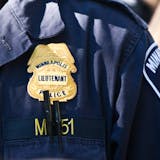The construction of Olson Highway through a stretch of north Minneapolis eradicated what was once a bustling commercial district for Black and Jewish residents.
Now, nearly a century later, a project aiming to convert a mile of the highway into a restored, more community-minded 6th Avenue N. is gaining momentum thanks to new federal funding.
The U.S. Department of Transportation recently granted $1.6 million to Our Streets Minneapolis, a nonprofit advocacy group spearheading the Bring Back 6th campaign in partnership with the Harrison Neighborhood Association. This funding is part of a $7 million grant allocated to locally led projects in Minnesota through the Reconnecting Communities Pilot program, a component of President Joe Biden’s Investing in America Agenda. Minnesota Sens. Amy Klobuchar and Tina Smith announced the funding earlier this week.
“[The money] will allow us to work on this project for a couple of years continuously,” said José Cabán, executive director of Our Streets Minneapolis.
Launched in 2021, the Bring Back 6th project seeks to transform the one-mile stretch of Olson Highway into a community corridor that reconnects the Near North neighborhood that was divided by the construction of the corridor. The goal, advocates said, is to create a healthier environment and opportunities for residents to access affordable housing, health care, employment, parks and other amenities.
Some residents of the area have concerns. Among them: gentrification, displacement and traffic delays. Cabán said traffic on Olson Highway has declined significantly in recent years as many drivers now use Interstates 394 and 94.
Cabán said his group would also like to see immediate near-term safety improvements in the area and a return of the land along the restored 6th Avenue N. corridor to the community.
Once known as the “Beale Street of Minneapolis,” the Near North Side was a bustling commercial district predominantly occupied by the city’s Black and Jewish communities.



